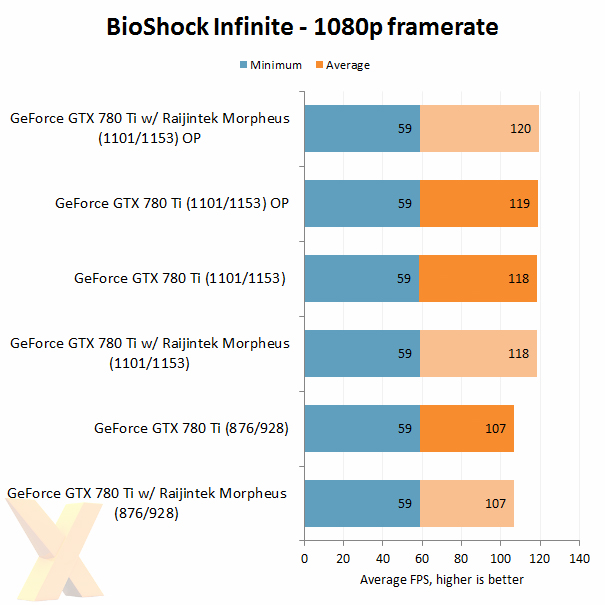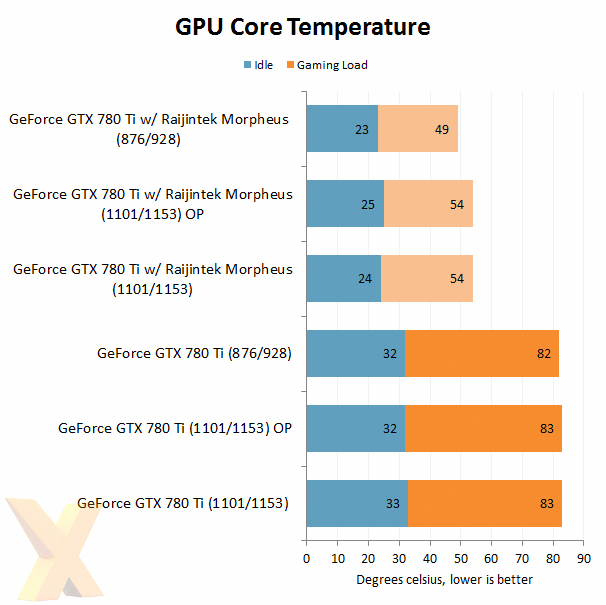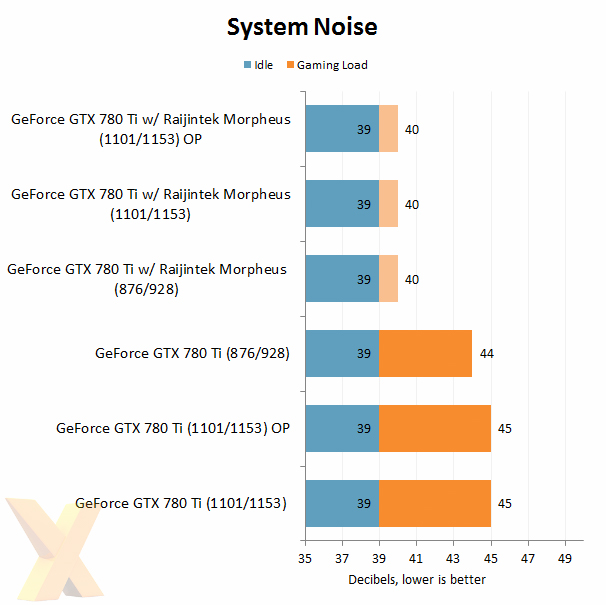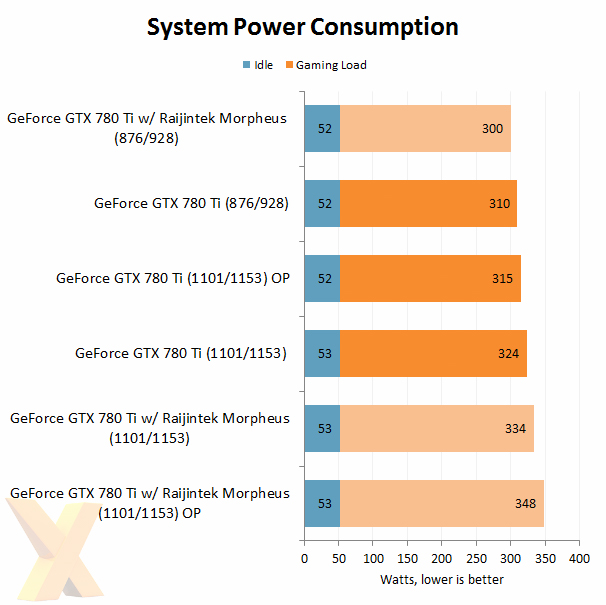How does it perform?

Raijintek’s Morpheus allows the GeForce GTX 780 Ti to perform slightly better at all clock-speed scenarios by eliminating thermal throttling - more on that later. Granted, the increase is only small, but it is nice to have regardless.

The BioShock Infinite benchmark puts the reference GeForce GTX 780 Ti cooler on equal terms with the Raijintek Morpheus. Gains in performance will vary depending on how demanding the game title is, and how long you play for. Remember that the Raijintek Morpheus will only bring performance benefits in the form of reduced thermal throttling and higher overclocking capabilities if your graphics card is thermally limited.

At stock speeds the Morpheus manages to reduce the GeForce GTX 780 Ti’s power consumption, likely due to the VRMs operating at a lower temperature and, therefore, at a higher efficiency. When overclocking is enabled power consumption jumps above the reference-cooled GeForce GTX 780 Ti, presumably because the removal of thermal throttling means the GPU can function consistently at its highest boost frequencies.

The Morpheus was designed from the ground-up to offer top-end cooling and that’s exactly what it delivers. On average the Morpheus shaves 30 degrees Celsius off the GeForce GTX 780 Ti’s gaming temperatures. Even with the highest power limit and stable overclock the Morpheus stayed resolutely in the mid-50s.

One of the drawbacks of the Raijintek Morpheus is that no fan-adapter cables are provided to convert a normal fan connector into the smaller graphics card fan connector. Consequently, you need to wire the 120mm fans into an alternative power source: a fan controller, motherboard or power supply. In our system we hooked our fans into the Corsair 600T’s fan controller and set the speed to the middle setting. Noise is kept consistently low due to the constant fan speed supplied by the fan controller; the modest increase in system noise that does occur upon loading is a result of other fans in the system and electrical noise.









